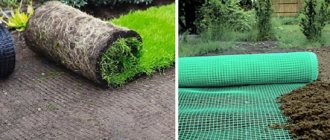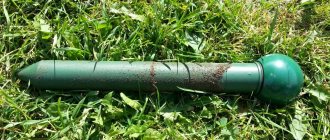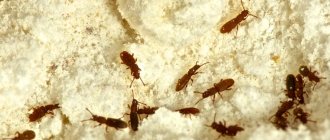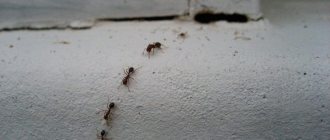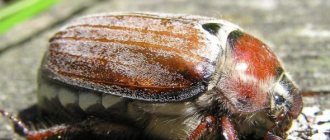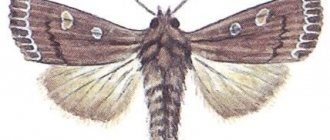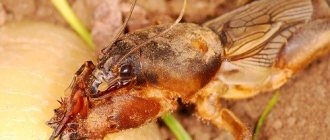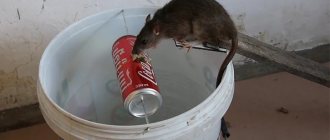The problem of many gardeners is wireworm. The pest itself is the larva of a click beetle, which looks like a caterpillar - a worm. The pest received this name due to its elongated, rigid body, which resembles a short (10-45 mm) piece of yellow-brown shiny wire. The larva lives in the soil, seriously damaging and destroying crops. His favorite plants are potatoes, beets, carrots, onions, cereals, and sunflowers. Moreover, it does not feed on leaves, but exclusively on roots and tubers.
Bait seeding
If the area is heavily affected by wireworm, sow wheat, oats or barley a couple of weeks before planting potatoes. Before planting potatoes, dig up the seedlings. There will be a wireworm there. Collect and destroy it. You can sow grain only in the holes where potatoes will be planted.
This method does not guarantee complete destruction of the wireworm, but it will help to significantly reduce the number of larvae on the site. When planting potatoes, use several additional control recipes.
Brief conclusions
Wireworms are considered one of the most dangerous pests: they attack both vegetable crops and other useful plants, even the roots of young fruit trees. Since the life expectancy of these larvae is long, and new pests can be brought into the area by adult click beetles, it is impossible to completely and permanently control the wireworm. To reduce the harm caused, all possible measures are used: you should not immediately rush to extremes and buy insecticides, you can try sowing green manure and setting up traps on the site.
Onion peel
It is best to make a decoction of onion peels and soak the seed potatoes there before planting. You can throw a large armful of onion peels next to a potato bush and dig it in a little so that it doesn’t get blown away by the wind.
The wireworm in potatoes does not tolerate the onion component, so you can, as an option, alternate planting: potatoes and onions.
Planting beans or beans
Plant beans or legumes between the potato bushes. In addition, the Colorado potato beetle does not like these crops. Beans do not protect against the Colorado potato beetle, but they do reduce its numbers on the site.
Plant peas, phacelia, mustard, marigolds or calendula around the perimeter. It is better to alternate sowing green manure and potatoes annually.
Wireworm in potatoes - we fight with potassium permanganate
When planting, water the potatoes with a solution of potassium permanganate. Irrigation with water during planting also increases potato yield. Potassium permanganate is diluted in water until a light pink composition is obtained. Water the hole or from above for planting, as is convenient for you.
When planting in a hole, add a little dry mustard. You can add red hot pepper.
Eggshell. Add ground eggshells to the beds or holes.
How to avoid losing crops due to click beetles
So much has been said about Colorado potato beetles! But they are not the most harmful creatures in the garden. They don’t hide from anyone, sit on damaged leaves, and attract summer residents with their bright colors. But going to war with a wireworm is much more difficult. It cannot be poisoned with chemicals or collected from leaves. And it is quite difficult to survive the yellow worm from the site. But it is possible.
Attention! The click beetle itself looks similar to a ground beetle, but the two can be differentiated. To do this, you need to catch the beetle, turn it over on its back and touch its abdomen. The beetle will jump, making the characteristic clicking sound that gives it its name.
On the left is a wire beetle and its larva, on the right is a false wire beetle.
The wireworm is the larva of a fairly harmless click beetle. These insects wake up at the end of April and begin to lay eggs in the ground to a depth of 2-3 cm. Females of various types of beetles lay up to 200 eggs! After about 2-3 weeks, offspring emerge from the eggs. The larvae live on the site for 3-4 years, then pupate and become beetles.
Wireworm in potatoes and weeds
Many professional gardeners have noticed that the wireworm loves wheatgrass. Destroy this weed in your garden. Also, after harvesting potatoes, you need to clear the area of all weeds. Wheatgrass contains all the useful substances for feeding the beetle larva, so where there is an accumulation of this weed, always look for a lot of wireworm.
In addition, the pest multiplies in wheatgrass. the weed itself can reduce potato yields by 70%. The creeping plant wraps around the root of cultivated plants and clogs their growth.
Why does the wireworm start?
You need to know the reasons for the appearance of a parasitic worm. In order to start fighting it, you need to know in which direction you need to act. Ideal conditions for wireworms are:
- Acidic soil with the presence of weeds, especially wheat grass and thistle;
- Constantly moist soil;
- Poorly fertilized heavy and clay soil;
- Vegetables planted close to each other favor the development and reproduction of larvae.
Pay attention to whether yours is among these reasons. By eliminating them, perhaps in 2-3 years you will remove the wireworm.
Wireworm in potatoes - we fight with folk remedies
Infusion for watering. The broth is infused for 3 days and the potatoes are watered every other day for a week (4 waterings), then take a break for 7-10 days. After this, you can repeat watering.
- Water – 10 l.
- Nettle – 0.5 kg.
- Mother and stepmother (flowers) – 0.2 kg.
- Celandine (needs to be crushed) – 0.1 kg.
- Dandelion – 0.2 kg.
Folk remedies remain the most effective for both potato growth and the quality of the future harvest. Do not neglect it and may your crop never know what wireworm is in potatoes.
You might be interested:
Tips for summer residents
Weed control (different methods)
How to get rid of slugs
How to identify a wireworm
I wrote that the garden pest prefers to live in the ground, feeding on root crops, which makes it difficult to meet it “face to face.” You can tell if there are wireworms in your area by the following characteristic signs:
- In tubers and root vegetables there are black dots, spots, narrow winding passages.
- Only individual bushes are damaged, and not the whole ridge or plantation. Wireworms can dig a vertical passage up to 1-2 m. But it is difficult to move in the horizontal direction - a maximum of 20-30 cm. Therefore, they prefer to feed on 1-2 neighboring plants.
- During the period of pest activity, it is possible to detect when digging up a garden in the upper layers of the soil.
Another sign is the appearance of adult click beetles. Outwardly, they are almost indistinguishable from useful ground beetles. However, the pest, turning over from its back to its abdomen, makes a clicking sound.
Why is it dangerous for potatoes?
Feeding on root crops, the wireworm makes deep tunnels in them, which leads to loss of presentation of the product, spoilage and rotting in the future.
When damaged by wireworms, the presentation of the potato is immediately lost.
Damaged tubers become watery, quickly become flabby and darken . The waste products of the larvae left in the potatoes also contribute to rapid fermentation.
When harvesting potatoes, you need to carefully discard damaged material. If the larvae get into the vegetable storehouse, they can damage almost the entire crop, moving from one tuber to another.
Other methods of controlling wireworms
In the case of wireworms, the “all means good in war” method works 100%. Therefore, we learned a couple more effective tricks needed in the difficult struggle for the vegetable garden.
- Attract birds to the site - crows, wagtails, rooks, starlings, thrushes and tits - they willingly eat click beetles and their larvae. Leave feeders and treats for the birds;
— Reduce soil acidity using eggshells, bone meal or ash;
— Plant plants between the beds that repel wireworms. These are mustard, spinach, lupine, buckwheat, rapeseed, sweet clover, dahlias and any legumes;
— If nutcrackers have settled in the garden bed, next year plant resistant crops there: pumpkin, greens, cereals or beans;
— Seasonal digging of the soil should be carried out especially carefully and deeply, because in the warm season the larvae get closer to the surface. And be sure to carry out deep digging before frost to destroy the wireworm, which has already laid down for the winter;
— Before planting potatoes, sow the bed with cereal or corn seeds. During this time, the wireworm will come out for new food - and you will destroy the larvae along with the first planting.
Photo: mastergrad.com
Castor bean (50 photos): types, care and planting in open ground
Chemicals
These are more aggressive methods of combating wireworms in the garden, but sometimes you cannot do without them. Be sure to use protective equipment: gloves, goggles, respirators.
— When planting tuberous crops, treat each onion with approximately 250 ml of manganese solution, 2-4 g per bucket of water;
— Some mineral fertilizers “displace” wireworms a couple of meters deep into the ground. There they no longer reach the crops. You will need approximately 30 g of ammonium nitrate or ammonium sulfate per square;
— Superphosphates treated with insecticides have proven themselves well. This is a more gentle method compared to using poisons directly. First, spray the fertilizers and let them dry on the film, and then apply them to the soil at a rate of about 5 kg per 100 square meters;
- As a last resort, use ready-made store-bought insecticides against wireworms in their pure form. Be sure to strictly follow the proportions and dosages on the label, because most of these substances are real poisons.
Photo: zen.yandex.ua
Mechanical wireworm traps
Banal mechanical traps work well against voracious larvae. We offer several proven options:
— Bury jars of chopped potatoes and carrots near the wireworm-infected bed. Cover the neck with foil and cut small holes so that beetles and larvae can get in, but cannot get out;
— String the remains of the old crop on a wire and dig it into the ground, leaving the end outside. After three days, pull the vegetables by the wire and destroy them along with the larvae;
— Adult beetles can be lured by a pile of manure or freshly cut grass;
— Generously pour sawdust soaked with insect poison into a glass jar. Dig the jars into the ground up to the neck in different places between the beds;
- Soak old and spoiled potato tubers in insecticide for a day and scatter them over the garden bed, adding a little bit. After a few days, replace the trap with a new one until the wireworms disappear from the garden.
Photo: beztarakanov.ru
Description of the potato pest
The size of the wireworm ranges from 1 to 5 cm. As mentioned above, it has a hard body, like wire. Color can vary from yellow to dark brown. It will be difficult to crush him.
Photo of wireworm
The development of the click beetle takes place over 5 years, while it remains in the larval stage for 3 or even 4 years. In the first year of life, the larva is not as dangerous as when it matures. In the 4th year pupation occurs.
Wireworms eat almost everything. They are considered polyphagous.
They consume roots, stems, and shoots. They eat seeds and seedlings. Passages are made in the fruits, and therefore they are poorly stored and become completely unsuitable for food.
